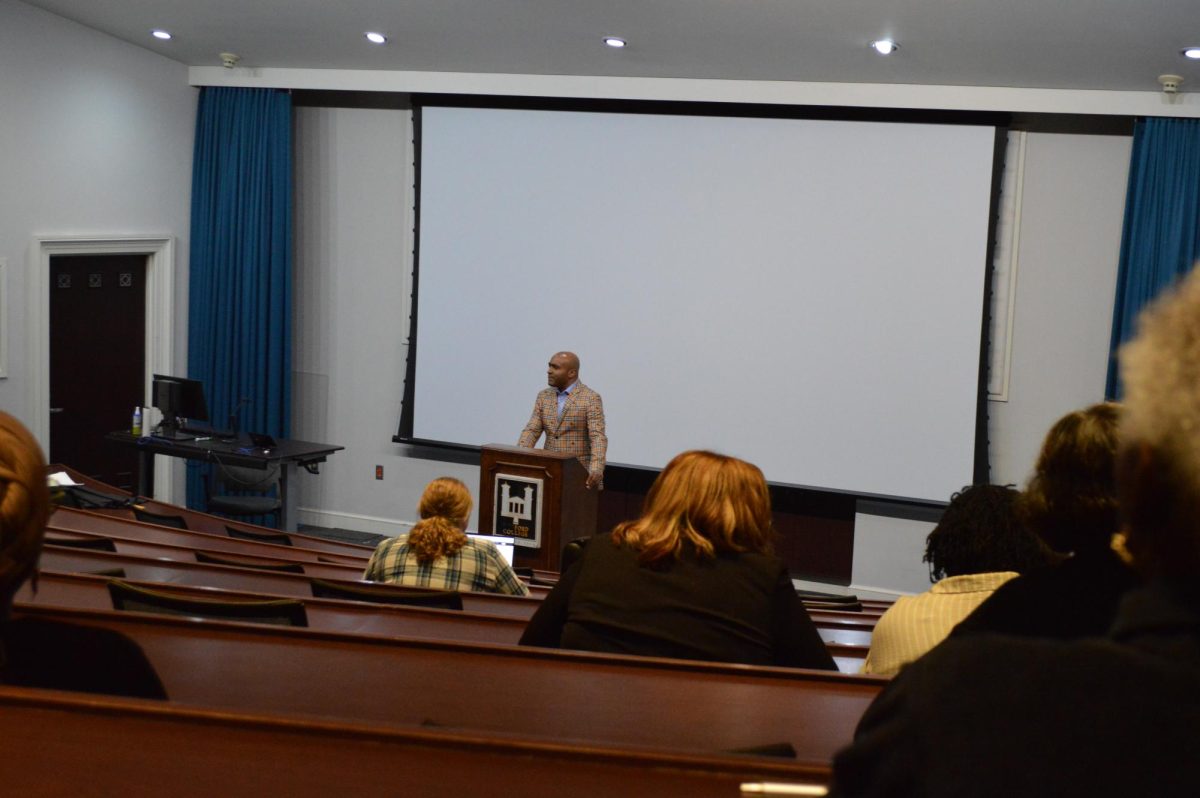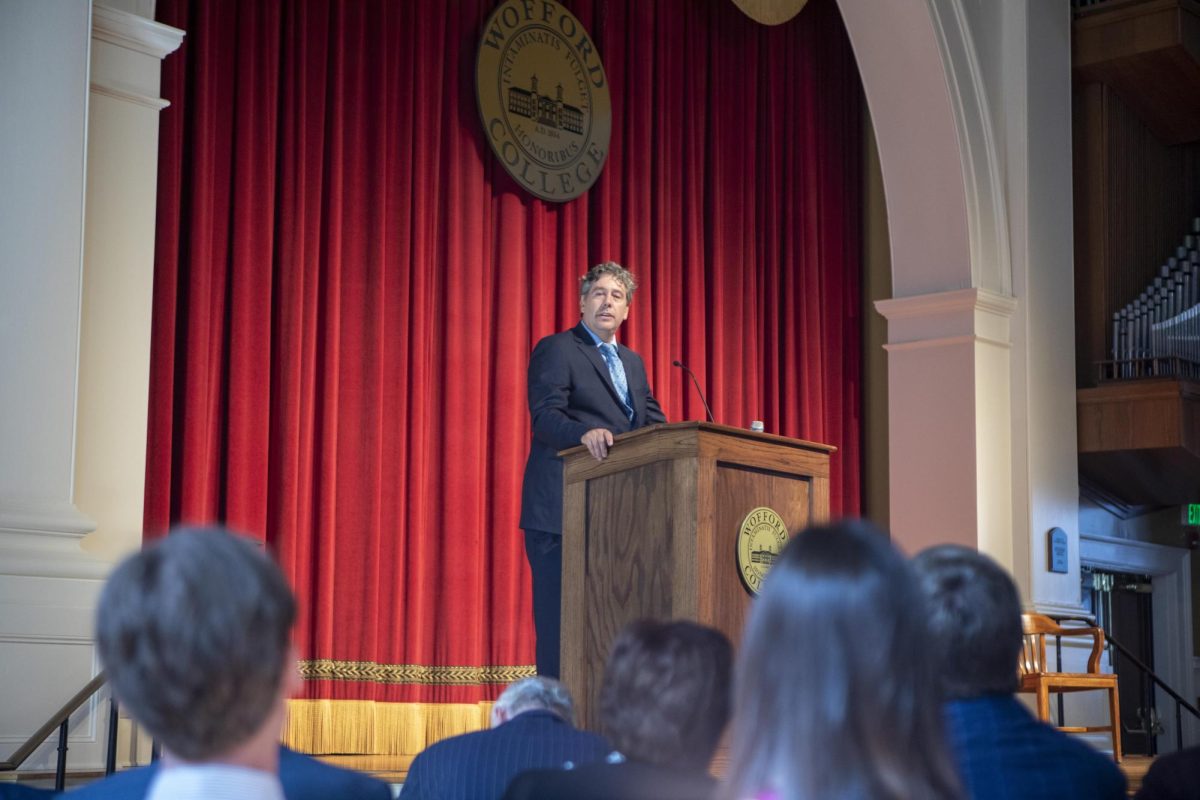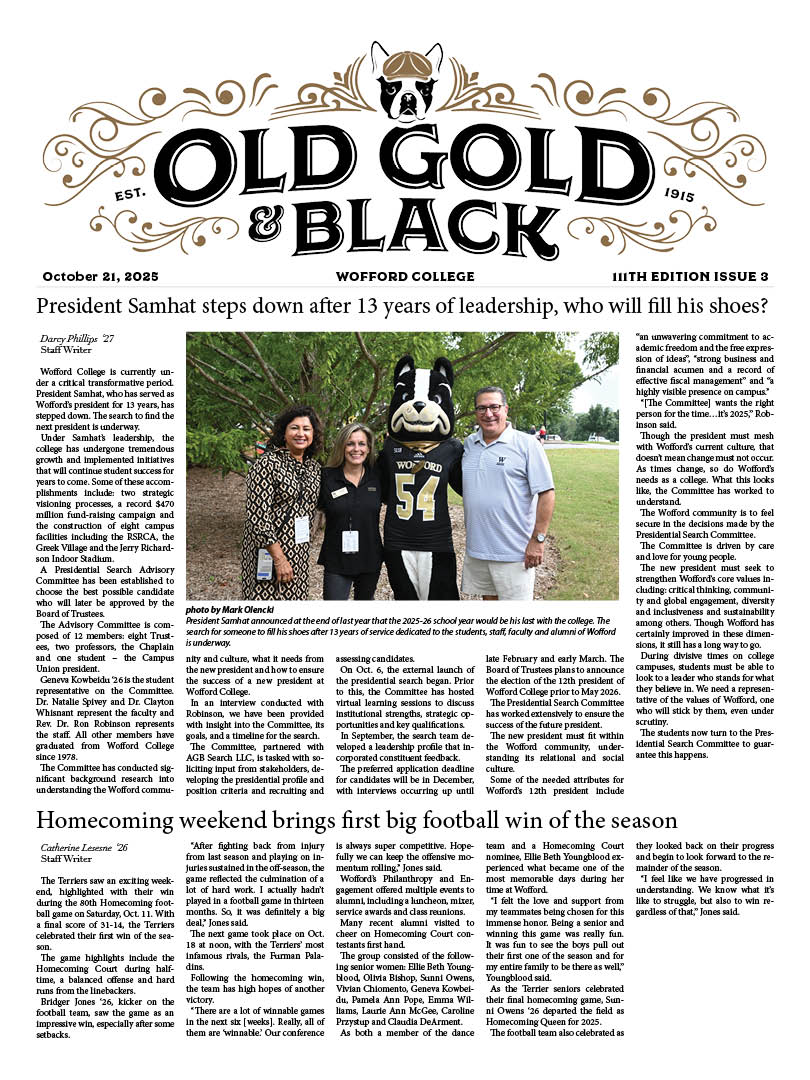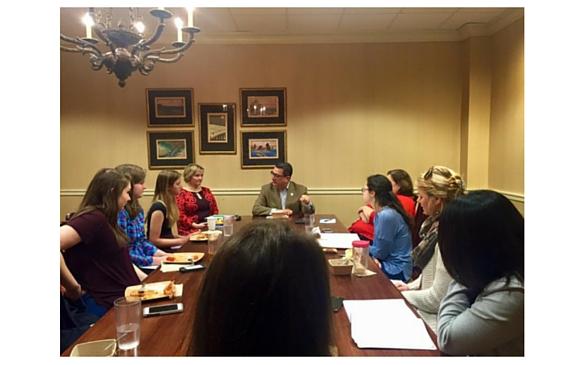By: Savanny Savath, Staff Writer
On Monday, Feb. 29, 2016, the Wofford community received an e-mail from Dr. Nayef Samhat, president of Wofford College. The e-mail informed the community of a tuition increase for the upcoming 2016-17 academic year.
Tuition increased by 4 percent, from $49,885 to $51,880. For students living off campus, tuition increased from $38,705 to $40,700. On the other hand, the percentage increase of 4 percent is a decrease from previous years.
Students like sophomore Torey Ballenger and senior Joe James have concerns about the increase.
Ballenger does not live on campus and is not directly affected by the tuition increase because her scholarships and financial aid cover more than the yearly costs. She expresses concerns for the students who will have to pay tuition and adjust for the increase.
“It is a frightening thing, especially for students who are already preoccupied with schoolwork, sports, extracurricular activities and so on. Once someone knows their financial standing when coming to college, whether they owe some, none, or all costs, it becomes very stressful to have to re-evaluate costs once more and have another thing to worry about. Especially when it can change how you live, like getting a job, applying for loans and scholarships almost immediately,” says Ballenger.
James is graduating this year in May, so he will not be paying tuition in the next year, but he also expresses concerns about how the increase will affect incoming classes.
“Wofford through its strategic vision is trying to engage more with the community and the world, and I think it’s a somewhat contradictory message to say that we want our community to benefit the Spartanburg and South Carolina community, while at the same time excluding members of those communities from going here. Tuition is now higher than the median household income of both state and city. The rising cost of higher education isn’t something Wofford can fix or change the course of by itself, I’ll admit, but it’s troubling for the future,” says James.
Samhat states that he understands students’ concerns and asks them to consider the various cost sectors of the college.
“As far as the tuition, I always ask people to step back and think about what happens here at our college. The primary purpose of the college is to educate young women and men. But at a residential liberal arts college like our own, it does many different other things. We go to the Richardson Center, so we’re like a fitness facility. Some people use the Wellness Center, so we’re a medical facility. Some people use the counseling center. We have campus security, so we have a police force. You might enjoy a band or a lecture, so we provide entertainment and culture. You live in different kinds of housing arrangements, so we’re basically a hotel and an apartment management,” says Samhat.
According to Samhat, Wofford’s peers, Furman, Davidson and Traveler’s Rest, are at or above $60,000. He also states that Wofford was ranked as a top tier college for socioeconomic diversity by the New York Times and that four-year graduation rates are as high as most top liberal arts colleges.
Samhat also explains how Wofford was able to decrease the percentage increase of tuition to 4 percent.
“One of the things we tried to do is to change how we purchase, change our purchasing arrangements. Other things we’ve tried to do is to simply develop more efficient processes and maintain and enhance budget discipline and also limit, really try to constrain any budget increases across the institution,” Samhat says. “One example is we basically held the line on a lot of budget lines. We try to hold the line on budget lines and target any increases in budgets in order to maintain budget discipline.”
“We’re also by the way trying to bring on three big buildings: the Greek Village, the Richardson Indoor Stadium and the Richardson Center for the Arts. The costs of their construction—these are all gifts. But the college always has to contribute some dollars to these things because of the planning and other things. These are things that we do in order to create new opportunities for students. They do have costs associated with them, so our job, mine and my team, is trying to manage those opportunities,” says Samhat.
“I understand that tuition increases are not something Wofford wants to do unless it absolutely has to, to remain competitive with other institutions. My dad went to Wofford and I would love my kids to one day have Wofford as an option, but unless something drastic happens it may be unattainable to them by then,” says James.
For more information on tuition, check out The Old Gold and Black’s Q&A with President Samhat.






























